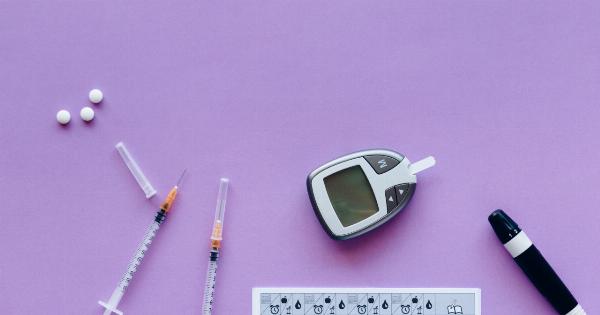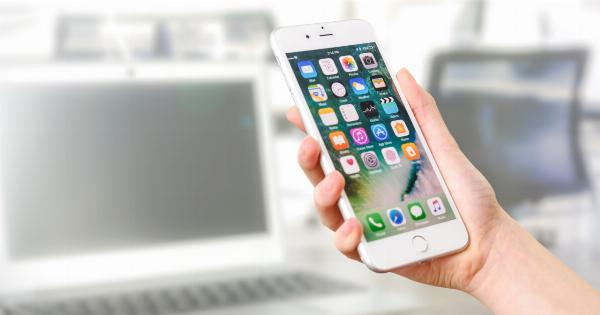Wearable technology has become increasingly popular in recent years, with devices like smartwatches and fitness trackers gaining widespread adoption.
However, these innovative gadgets are not just limited to tracking steps and heart rates; they have also found their way into the medical field, revolutionizing the way we manage chronic conditions like diabetes. In this article, we will explore the world of wearable technology for diabetics and how it is making a positive impact on their lives.
What is Diabetes?
Diabetes is a chronic condition that affects the body’s ability to regulate blood sugar levels. There are two main types of diabetes: type 1 and type 2.
Type 1 diabetes is an autoimmune disease where the body does not produce insulin, a hormone responsible for regulating blood sugar levels. On the other hand, type 2 diabetes occurs when the body becomes resistant to insulin or does not produce enough insulin to function properly.
Challenges Faced by Diabetics
Managing diabetes can be challenging, as it requires constant monitoring of blood sugar levels, adherence to medication schedules, and precise insulin dosing.
Without proper management, diabetics are at risk of developing serious complications such as heart disease, kidney failure, and vision problems. Additionally, hypoglycemia (low blood sugar) and hyperglycemia (high blood sugar) can have immediate and severe consequences if left untreated.
How Wearable Technology Helps
Wearable technology has introduced a new era of convenience and efficiency in diabetes management.
These devices use advanced sensors and connectivity features to collect and analyze real-time data, empowering diabetics to make informed decisions about their health. Here are some ways wearable technology is helping diabetics:.
Continuous Glucose Monitoring (CGM) Systems
CGM systems are small, wearable devices that continuously monitor glucose levels throughout the day and night. They consist of a tiny sensor placed under the skin, which measures glucose levels in the interstitial fluid.
This data is then transmitted to a receiver or smartphone app, providing real-time updates on blood sugar levels.
Insulin Delivery Systems
Wearable insulin delivery systems, such as insulin pumps, offer a convenient and discreet way for diabetics to administer insulin.
These devices eliminate the need for multiple daily injections by delivering insulin through a small catheter placed under the skin. Some insulin pumps can even be controlled remotely through smartphone apps, allowing for precise dosing and monitoring.
Smart Insulin Pens
Smart insulin pens are pen-like devices that integrate connectivity features and tracking capabilities. They help diabetics keep track of the time, date, and dosage of their insulin injections.
Some smart pens also offer reminders and alerts to ensure medication adherence, making it easier for diabetics to stay on top of their treatment regimen.
Activity Tracking and Dietary Monitoring
Wearable devices equipped with activity trackers and dietary monitoring features can be highly beneficial for diabetics.
These tools enable users to track their physical activity levels, calorie intake, and nutritional content, helping them make informed decisions about their diet and exercise routine. For example, wearable technology can calculate the number of carbohydrates consumed and provide insight into the impact on blood sugar levels.
Alerts and Notifications
One of the significant advantages of wearable technology for diabetics is the ability to receive real-time alerts and notifications.
Users can set customized thresholds for blood sugar levels and receive immediate notifications when they go outside the desired range. These alerts serve as a reminder to take action, such as adjusting medication or consuming glucose, to ensure stable blood sugar levels.
Integration with Smartphone Apps
Many wearable devices seamlessly integrate with smartphone apps, allowing diabetics to synchronize and analyze their data in one place. These apps offer comprehensive dashboards with detailed insights, trends, and analytics.
They can also generate reports that can be easily shared with healthcare providers, enabling remote monitoring and more effective treatment management.
Enhancing Quality of Life
Wearable technology for diabetics goes beyond the basic monitoring and management of blood sugar levels. These devices help in improving the quality of life for diabetics in several ways.
By providing real-time feedback, they empower individuals to take control of their health and make more informed lifestyle choices. Wearables also help alleviate the mental burden associated with constant monitoring, as they automatically collect and analyze data, making it easier for diabetics to focus on living their lives without undue stress and worry.
The Future of Wearable Technology for Diabetics
As technology continues to advance, wearable devices for diabetics are expected to become even more sophisticated and impactful.
Researchers are exploring the integration of artificial intelligence (AI) algorithms into wearable devices to predict abnormal blood sugar fluctuations and provide proactive recommendations. Additionally, there is ongoing work to develop non-invasive glucose monitoring solutions, eliminating the need for frequent finger pricks.
Conclusion
Wearable technology has revolutionized the way diabetics manage their condition, offering convenience, real-time monitoring, and personalized insights.
With continuous glucose monitoring, insulin delivery systems, smart insulin pens, and integrated smartphone apps, these devices empower diabetics to take control of their health and make informed decisions. As technology further evolves, the future holds even more promise for wearable technology in improving the lives of diabetics worldwide.

























